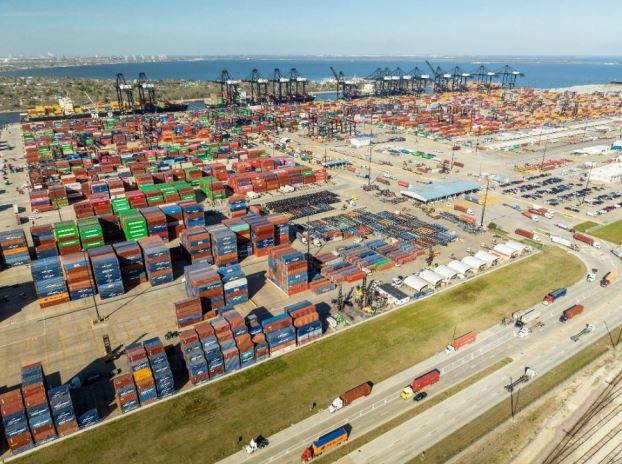 Port Houston reported double-digit gains in July, with container volumes rising 21% compared to July 2024, reaching 392,829 TEUs. According to the company's release, year-to-date volumes totaled 2,562,506 TEUs, up 6%, making 2025 the fastest-paced year in the Port’s history.
Port Houston reported double-digit gains in July, with container volumes rising 21% compared to July 2024, reaching 392,829 TEUs. According to the company's release, year-to-date volumes totaled 2,562,506 TEUs, up 6%, making 2025 the fastest-paced year in the Port’s history.
Loaded imports grew 19% in July, the largest increase among the top five U.S. container ports. Loaded exports, primarily resins, rose 18% year-on-year. Overall, total loaded containers handled so far this year are up 5%.
General cargo volumes increased 10% year-to-date through July. Steel imports climbed 41% in July compared to the prior year and are up 8% year-to-date, totaling 2,704,658 short tons. Overall tonnage across public facilities reached 32,647,865 short tons, an increase of 6% from last year.
The Port continues to invest in infrastructure, including Wharf 7 at Bayport Container Terminal, a 1,000-foot berth scheduled for completion in December, nearly two months ahead of schedule. The project will expand vessel capacity and reduce anchor wait times.
The Houston Ship Channel Expansion, known as Project 11, recently received the Environmental Excellence Award from the Western Dredging Association. Nearly 100% of the 15 million cubic yards of dredged material from the Galveston Bay segment has been reused to create bird islands, intertidal marsh, and oyster reefs. The project enables vessels of up to 17,000 TEUs to call at Bayport Terminal. The Port-led dredging portion is scheduled to finish later this summer, with subsequent work to be led by the U.S. Army Corps of Engineers.
Port Houston is a political subdivision of the State of Texas that owns and operates eight public wharves and terminals along the Houston Ship Channel. It oversees two major container terminals, the region’s largest breakbulk facility, and acts as the strategic leader and advocate for the Channel. The Houston Ship Channel complex, which includes more than 200 private and eight public terminals, is the largest U.S. port by waterborne tonnage.



